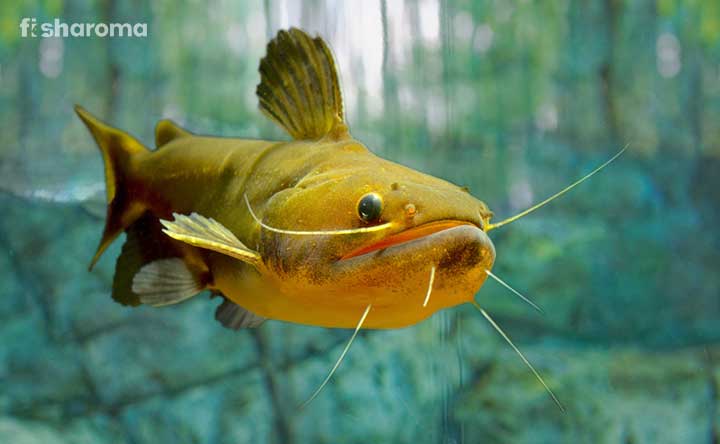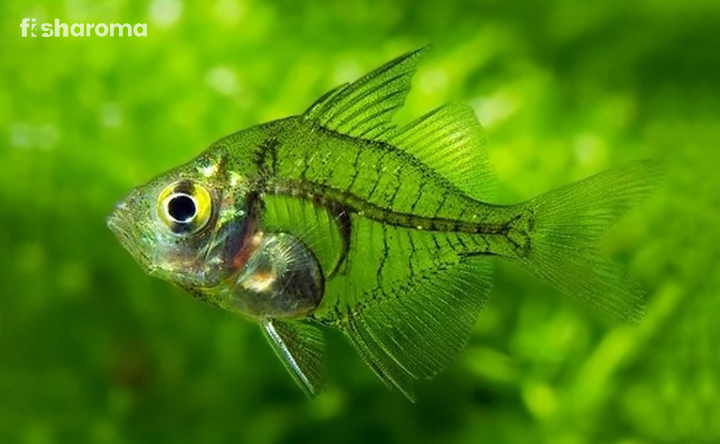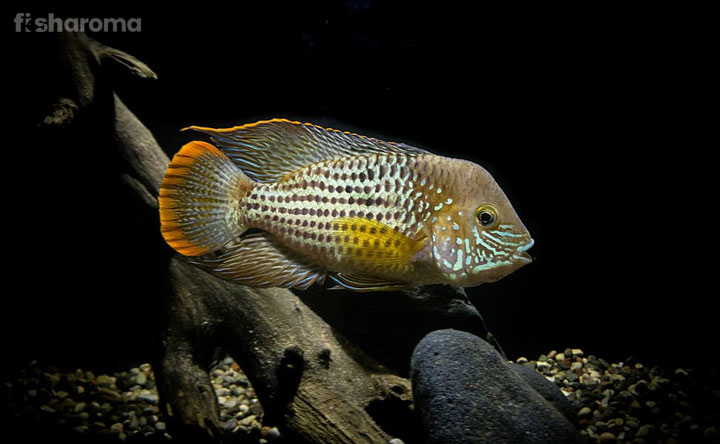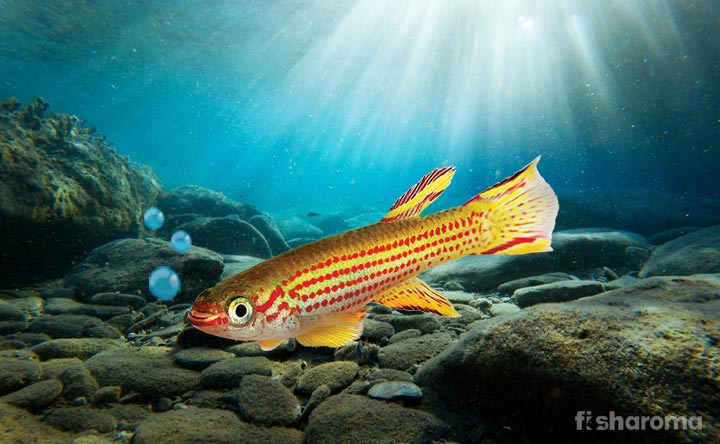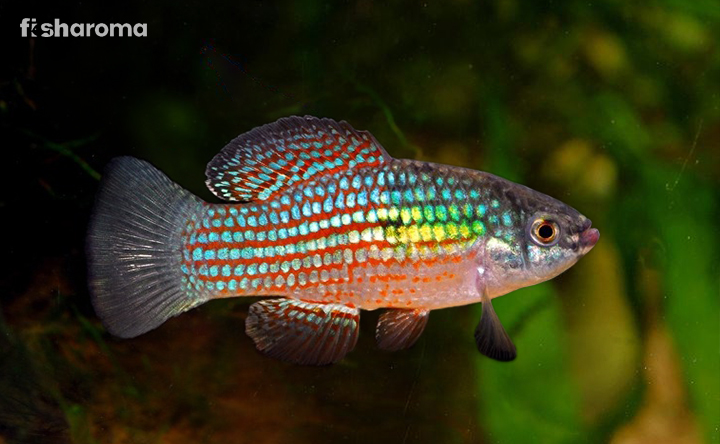The Complete Care Guide of Clown Killifish
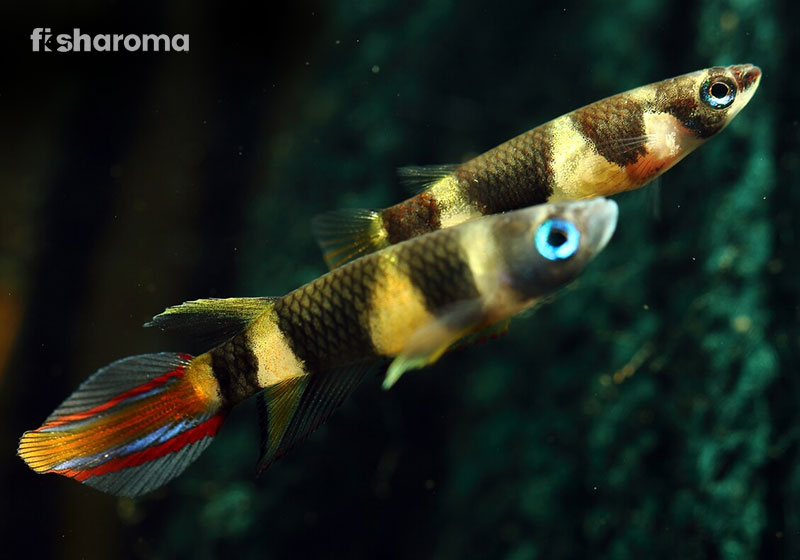
One of the most graceful swimmers, Clown Killifish have been a favourite among freshwater aquarists for years now. Their beauty is bound to grab the attention of anyone who lays their eyes on them. However, as beautiful as they may be, caring for them requires an in-depth knowledge of their lifestyle. This is why we are here. Today, we are bringing before you an all-inclusive care guide for the same so that when you bring these beauties home, you can provide them with a healthy environment. So, let us get started.
Key Specifications of Clown Killifish
Before we explain each aspect of their lives in detail, let us take a closer look at some of their key specifications.
| Scientific Name | Epiplatys annulatus |
| Origin | Western Africa |
| Lifespan | 5 Years |
| Colours | Varied |
| Temperament | Peaceful predator |
| Size | 1.2-1.4” (3-3.5 cm) |
| Diet | Carnivore |
| Family | Nothobranchiidae |
| Compatibility | Moderate |
| Tank Size | 5 Gallons |
| Care Level | Easy to moderate |
Overview
Scientifically known as Epiplatys annulatus, Clown Killifish belong to the Nothobranchiidae family. Besides, they are also known as Banded Panchax and Rocket Killies. They derived their name from the Dutch word Kilde that translates to channel or ditch.
There are around 1,270 different species of Killifish and Clown Killifish is one of them. Hosting them can be a bit tricky since they are one of those rare freshwater aquatic pets that tick both the boxes of being peaceful species and predatory species.
Origin & Habitat of Clown Killifish
Native to Western Africa, you can find Clown Killifish in Sierra Leone, Liberia, and Southern Guinea. They are mostly seen in streams, marshes, water holes, and swamps.
These freshwater creatures prefer slow-moving water. In captivity, they reside at the top level of the aquarium. They also love vegetation in their vicinity. In addition, Clown Killifish require hiding spots in their surroundings. The beauties also don’t appreciate too bright lighting. So, keep that in mind while setting your tank.
Appearance of Clown Killifish
Clown Killifish are known for their majestic beauty. They resemble tiny rockets, which is why they are known as Rocket Killifish, with torpedo-shaped bodies. Due to the fact that they are bottom feeders, the mouths of Clown Killifish turn up conveniently.
They are known for their long ray and their tail fin is shaped like a spade, while they would fascinate you with their round heads. They are sexually dimorphic, which makes it relatively easy to differentiate between females and males.
Size of Clown Killifish
These are one of the smallest freshwater aquatic pets that you can host in your aquarium, measuring 1.2-1.4” (3-3.5 cm) in length. The females are relatively smaller than their male counterparts. The caudal fin rays are also smaller in females than males.
Colour of Clown Killifish
Clown Killifish are brightly coloured species with most of them being in blue/red and yellow/black combination. Even within the same brood, they come in a wide range of colours. They have stripes on their bodies, the width of which can also vary from individual to individual.
Although both males and females share the same cream-coloured body, the fins are differently coloured in them. While the fins of males can vary in red, cream or blue or even reddish-blue, the females have a transparent or clear fin. The caudal fins are also more colourful, being light blue in colour with the rays ranging from red to orange to yellow.
Behaviour of Clown Killifish
As we have stated above, Clown Killifish stand at the middle of two distinct traits. They are peaceful, yet predatory. This makes them one of the most intriguing freshwater aquatic pets. But they are not one of those predators who chase their preys.
Instead, they lurk in the dark and wait for their preys to come to them, and when it is least expected they attack them by grabbing them with their prominent upturned mouths. In short, they are the masters of ambushing.
These fish are extremely shy but are also playful. So, as you see, they represent so many dynamics in the game. In addition, they are highly skilled in jumping, which is why you would need a sturdy lid for your tank.
The male Clown Killifish likes to show-off, especially when kept in a school of fish.
Lifespan of Clown Killifish
Clown Killifish can live up to five years in captivity, provided you take care of them and give them a healthy environment to thrive in. Five years is a bit of commitment. So, make sure you are up for it because if you suddenly throw them in the nearby pond, they won’t be able to adapt to the sudden change and would meet an untimely death.
Diet of Clown Killifish
Despite their unassuming appearance, these creatures love to gorge on meat owing to their carnivorous nature. So naturally, they have a huge requirement for meaty proteins.
Due to their small size, they mostly depend on small insects in the wild. In an aquarium setting, you can feed them both live and frozen foods. Remember, you need to thaw frozen food before putting them in the tank. Also, in case you are feeding them dried food, make sure to moisten them before putting them in the tank.
In addition, the food has to be broken in small particles so that it is easier for them to eat and digest. Try switching between live and frozen food every alternate day.
An ideal diet of Clown Killifish should comprise of the following items:
- Walter Worms
- Copepods
- Fruit Flies
- Mosquito Larvae
- Baby Brine Shrimp
- Small Grindal Worms
- Vinegar Eels
- Microworms
- Confused Flour Beetles
- Confused Flour Beetle Larvae
- Moina
- Small Daphnia
Tank Requirements for Clown Killifish
To make sure they are not claustrophobic or feel stressed, you need to recreate their natural habitat in your aquarium. For this, you need to make sure that you check the following requirements.
Tank Size
If you are only keeping Clown Killifish in a tank, then a micro or nano tank would suffice. This means a 5-gallon tank would get the job done. However, the issue with small tanks is that they need strong filters due to the accumulation of wastes. Small tanks also require more regular cleaning.
If you are keeping them in large community tanks, then you don’t have to worry too much about boisterous regular cleaning. However, in that, you need to note their compatibility, which we will get into later in the article.
Since they are really small, you can keep around three pairs in a 5-gallon tank and around eight pairs in a 10-gallon tank.
Tank Lid
As we have mentioned above, these fish are skilled jumpers. So, having a sturdy lid is mandatory so that they don’t jump to their death on the floor. Besides, having a tank lid protects the tank water from dust and dirt.
Substrate
You can use a sand-based or clay-based substrate for the tank where you keep them. However, make sure the sand or clay don’t have any artificial colouring. The sand should be of fine grains.
Filter
This is a difficult one to decide. Filter helps keep the tank water clean. So, having one would make sure you don’t have to regularly replace water or clean the tank too much. But, these fish also prefer low current or even still water. So, if you are using a filter, then make sure you keep the water movement at minimal.
Ornaments
Clown Killifish require hiding spots in their tank since they are naturally shy. Also, even though they won’t prey in your tank, they still would like to ambush owing to their predatory nature. So, feel free to have artificial castles, caves, pebbles, and rocks in your tank. Just make sure that the holes in caves and castles are large enough for these fish to pass through and that they don’t have any artificial colours or sharp edges.
Lighting
Standard aquarium lighting will suffice. In the natural habitat, they don’t have access to too much lighting and they are used to that.
Presence of Flora
They love having vegetation in their vicinity. As such, make sure flora is present in the tank water they reside in. Some of the aquatic plants that are suitable to be kept with Clown Killifish are Water Lettuce, Water Sprites, Java Ferns, and Guppy Grass. However, in case of Guppy Grass, make sure there is not an overgrowth. You can also include driftwood in the tank.
Cleaning Method
Regularly cleaning the tank would ensure that your fish are stress-free and that they stay healthy, which would, in turn, add to their lifespan. Don’t use any soap or chemical-based products to clean the tank since their residue would harm your Clown Killifish.
Simply, use a soft cloth that is dipped in lukewarm water to wipe off the interior walls of your tank. For the substrate and ornaments, you can put them under running tap water. Use an algae-scraper to get rid of algae.
Water Type for Clown Killifish
Now, let us focus on the type of water you need to provide them with. You can even pre-condition your water by keeping it in a separate tank and by soaking peat in a box filter in it for a few days. Once the water gets an amber tint, you can add it to the main tank.
Temperature
Since Clown Killifish prefer slightly warm water, you can keep the temperature of the water between 68° – 79° F (20° – 26° C).
pH Level
They prefer slightly acidic water. As such, the pH level of the tank water should be between 4-7.
Hardness
The carbonate hardness of the tank water should be 4-8 dKH and it should be 50 ppm.
Mineral Level
As with most other aquatic pets, Clown Killifish are also extremely intolerant of ammonia and nitrates. So, make sure you conduct nitrogen cycle your tank before adding your fish in it so that the level of ammonia and nitrate is at nil.
Replacement Procedure
Clean water would keep them healthy, and you need to perform regular water replacement for it. As a result, make sure you keep up with it. Never replace the entire water content altogether. This would kill the beneficial bacteria. You can replace 10% of the water every week or 20% of the water fortnightly or 40% of the water monthly. Choose one of these three replacement timelines.
Compatibility of Clown Killifish
They are pretty compatible with each other and watching a school of Clown Killifish swim is a sight to behold. So, you can keep 3-8 pairs of Clown Killifish together. Although they are small, please provide them with ample space to swim. They are pretty good with each other although the males sometimes get aggressive with each other, especially during breeding.
Remember, always keep them in even numbers and ideally in pairs.
Suitable Tankmates for Clown Killifish
Ideally, you should keep them with small and peaceful species. However, make sure that they are not too small that they become prey to Clown Killifish. Some of the suitable tankmates for Clown Killifish are as follows:
- Small Barbs
- Small Plecos
- Bettas
- Gouramis
- Minnows
- Corydoras Catfish
- Danios
- Some Varieties Of Tetras
Unsuitable Tankmates for Clown Killifish
Avoid keeping them with large or aggressive species since they would become prey to them. In addition, don’t keep extremely tiny fish with them since the reverse would happen and they would become prey to Clown Killifish. Keep them with similar-sized fish.
Breeding of Clown Killifish
Breeding will take place naturally when a pair is kept together and the right water conditions are provided. They breed twice in a single month and each time, they produce up to 2 fires. We recommend you incorporate floating tanks into the aquaspace to ensure successful breeding.
There should be ample hiding spots and plants during breeding. After the fires take birth, put them in a separate tank and fed them infusoria and green algae alongside small vinegar eels and worms. After a few days, when they have grown a bit and are safe from being attacked in the main tank, you can transfer them there.
Summary
Clown Killifish are truly majestic species. Despite being peaceful, they are predatory by nature. You can keep a school of Clown Killifish together and watch them gracefully swim. They are easy to breed and don’t have any major tank requirements. The only thing that might worry you is their carnivorous diet since that means you have to provide them with live food on a more regular basis than you do the other fish.
If you see any irregular behaviour or any cut on their skin or swollen body parts or if you see them inactive or not eating, immediately contact a veterinarian.
Care Guides of Other Similar Pets
If this article has interested you, then we hope you would enjoy these following articles as well:
- Chilli Rasbora Care Guide: Bring home these orange-reddish beauties and elevate the aesthetics of your tank.
- Bolivian Ram Care Guide: Having trails of pink, blue, silver, and yellow, these are some of the most gorgeous aquatic pets that you can have.
- Crowntail Betta Care Guide: Highly aggressive by nature but truly majestic in appearance, these fish are one of a kind.


